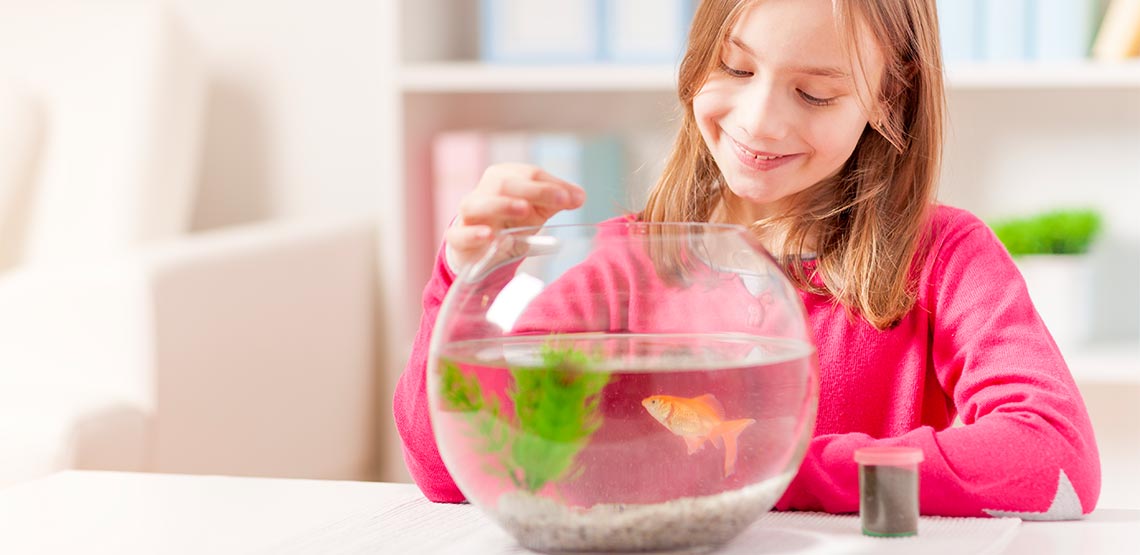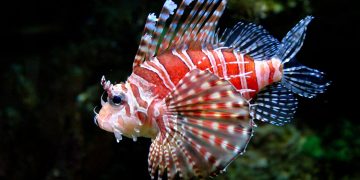Make Sure Everything Goes Swimmingly
Fish seem to be the most trouble-free pet in the world. All you have to do is feed them on time and keep the aquarium clean. Unfortunately, keeping fish healthy is a science many people don’t bother to learn. Who needs a clean aquarium when fish are sick? Let’s start with making sure your fish get the right food they need to stay healthy.
Types of Fish Food
There are four general types of fish food.
Processed Fish Food
This is the most common type of fish food. It takes the nutrition requirements of different fish species into consideration. Vitamins and minerals complement the nutrients. These foods come in a variety of shapes and sizes. They also come with different weight to accommodate fish, which eat at the bottom or the middle of the aquarium, as well as those that swim to the surface to feed.
Some manufacturers create processed food for picky fish, and sick fish as well.
Natural Fish Food (Live)
Live fish food is designed for carnivorous and fry fish. Such fish can’t get all their necessary nutrients from processed foods. Live food is tastier for these fish, and helps them feel closer to their natural environment. The disadvantage of live food is that the aquarium gets dirty faster. However, live food is very important for the health of these fish.
Fresh Fish Food (Not Alive)
Many fish enjoy eating fresh vegetables and meat before they are processed into pellets. Herbivorous fish prefer greens and veggies, while carnivorous fish need meat protein and fat. The downside of fresh food at the regular supermarket is that you can’t be sure that it’s 100% natural. Nitrates and antibiotics are often found in the non-eco food may harm the fish.
Frozen Fish Food
Freeze-dried food allows your fish to get all the nutrients and vitamins it doesn’t get from processed food. These foods are available in pet stores so you don’t have to worry about going grocery shopping for your fish. It’s a great alternative to fresh food.
What to Feed Your Fish
Each fish species has its own preferences. When you are buying fish food, the label will usually tell you which species it’s suitable for. However, having a good idea about which food suits which fish can help you take better care of your pets.
Vegetable Foods
Now we’re talking about processed food with high vegetable content, and fresh vegetable foods. Most of the fish that you keep in your aquarium probably require a diet with a good vegetable content. Some of these species include:
- Goldfish
- Livebearer fish (guppies, swordtails, mollies, platies)
- Suckermouth catfish
These fish enjoy a good amount of fresh greens and veggies. However, processed food pallets (flakes, crisps, disc, etc.) are also important since they contain other types of vitamins and minerals.
When offering fresh or frozen veggies to your fish, heat it up a little in order to make it easier to chew and digest. About 30 seconds in the microwave is sufficient for fresh vegetables.
You May Also Like:
Related Search Topics (Ads):
Live/Fresh Fish Foods
If some of your fish are carnivorous, they require meat (or more accurately, fish) to survive. Most of your carnivorous fish are fine eating fresh and freeze-dried food. However, some fish require live food to survive. Some of these species include:
- Leaffish
- Datnoids
- Pike Cichlids
If you have one of the following species, remember that they require fresh fish food on a regular basis due to their carnivorous nature:
- Bettas
- Tetras
- Oscars
- Discus
- Loaches
- Butterflyfish
- Brown-banded bamboo sharks
- Wolf Cichlids
- Peacock Bass
- Piranhas
How and When to Feed Your Fish
Now that you know which food to use, how will you use it?
Feed Your Fish Once a Day
The majority of fish require food once a day. This has to with their digestive time, which is usually about 20 to 24 hours. This means that feeding fish twice a day may lead to overfeeding.
Overfeeding causes water pollution. Besides, leftover food can produce toxins, which are harmful to fish. All the food you put into the aquarium should be eaten quickly.
If the food is not devoured within 3 to 5 minutes, you are giving your fish too much.
There is, however, one exception to this rule. Herbivores (plecos, bristlenosed catfish, sucker catfish) need frequent feedings since they have small stomachs. Divide the daily food portion into several feedings.
Try to feed your fish at the same time every day.
Keep the Food Safe
The food you give your fish should be fresh. Even if you give it processed food, try not to keep it longer than one month. All the food should be kept in the freezer in order to preserve the vitamin and nutrition content.
Don’t Allow Snacking
Even if the fish look hungry to you, it probably isn’t. Unfortunately, some people give fish something to snack on every once in a while. This can lead to overeating and eventual death. Make sure to keep a routine feeding schedule.
Don’t Forget to Feed the Fish
If you’ve forgotten to feed your fish once or twice, it will not affect their health. In fact, most fish are quite strong and can go on for a week without feeding. However, it’s recommended not to miss feeding times.
Think of the Bottom Feeders
If some of your fish are bottom feeders, don’t feed them at the same time as the rest of the gang. It’s better to feed them in the evening after you turn off the lights. This ensures that they get their food instead of giving it up to faster eaters. Most bottom feeders are nocturnal. Common species include:
- Common pleco
- Sailfin pleco
- Bristlenose pleco
- Cory catfish
- Loaches
- Chinese algae eaters
- Crayfish

